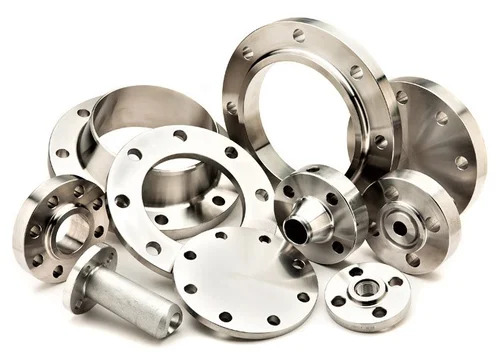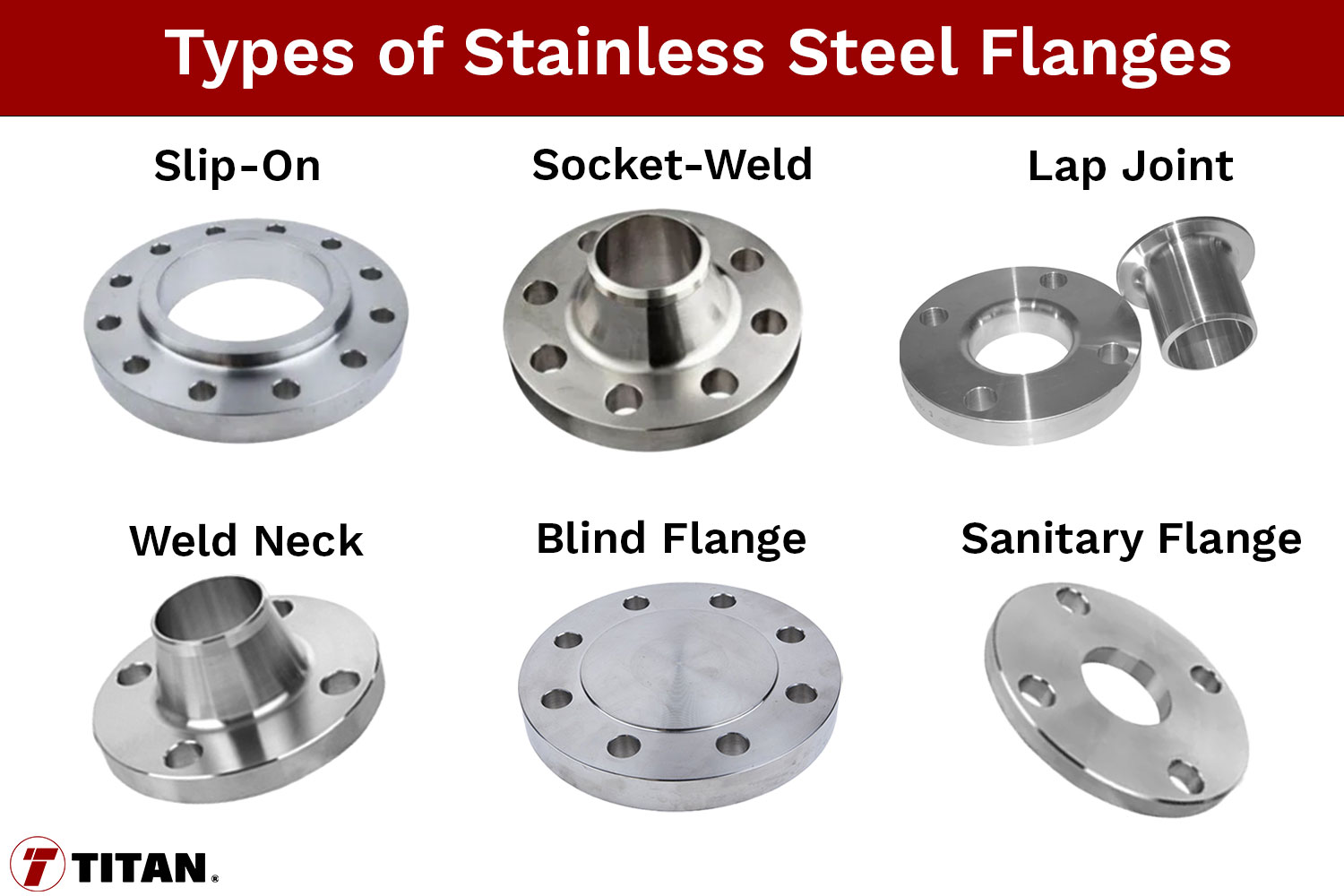# A Comprehensive Overview of Flange Fundamentals
Flanges serve as the vital connectors in piping systems, linking pipes, valves, and other components to ensure seamless operation. They play a critical role in maintaining a leak-proof seal, which is essential for the safe and efficient transfer of fluids in numerous applications. A flange connection typically consists of two pieces attached to the ends of the pipes, secured together via bolting or welding. This design not only provides a sturdy bond but also facilitates easy disassembly when necessary. For specific applications, such as sanitary flanges, a gasket is often used to enhance the seal's reliability. Flanges are manufactured in a variety of materials, including carbon and stainless steel, each suited to different operational requirements and environments.
Flanges are indispensable in modern infrastructure, playing a pivotal role in industries ranging from manufacturing and petrochemicals to plumbing. They are fundamental in ensuring the structural integrity of piping systems, distributing the load evenly across flange bolts, and maintaining overall stability. By enabling the integration of valves and other flow control devices, flanges also assist in managing and regulating fluid movement effectively. Their ability to create reliable seals under pressure is particularly crucial in industrial settings where even minor leaks could lead to significant consequences.

## The Importance of Flanges in Plumbing and Piping Systems
In plumbing and piping networks, flanges are the backbone of assembly processes. They are instrumental in preventing leaks, especially in high-pressure environments, thereby ensuring the safe and uninterrupted flow of fluids. Whether it’s a residential plumbing system or a large-scale industrial setup, flanges enable the efficient joining of pipes, contributing significantly to the overall performance and longevity of the system. Understanding the various types of flanges and their specifications is essential for engineers and technicians alike, as it allows them to select the most appropriate option for their specific needs. Adhering to standards such as those set by ASME and ASTM ensures that the flanges meet the required quality and compatibility benchmarks.
## Diving Deeper into Flange Varieties
The world of flanges is vast, encompassing a wide range of designs, each tailored to specific applications and environments. Standards set by organizations like ASME and ASTM are crucial in maintaining uniformity and quality across different flange types. For instance, flanges used in hydraulic systems adhere to the SAE standard J518/ISO 6162, ensuring compatibility and reliability in demanding conditions.

### 1) Slip-On Flanges
Slip-on flanges are widely used due to their simplicity and cost-effectiveness. These flanges are slid onto the pipe before being welded, making them ideal for applications where rapid installation and budget-friendly solutions are preferred. Although they are versatile and suitable for a range of temperatures and pressures, they are generally not recommended for high-pressure or high-temperature systems where durability is paramount. Their lightweight design and ease of alignment make them a practical choice for less critical applications.
### 2) Socket-Weld Flanges
Socket-weld flanges are specifically designed for high-pressure systems, particularly in smaller diameter pipes. These flanges feature a recessed area, or socket, into which the pipe is inserted and then welded. This design ensures a strong, leak-proof connection, making them perfect for environments where minimizing fluid leakage is critical. They are commonly used in chemical, petrochemical, and steam applications, where smooth fluid flow is essential.
### 3) Lap Joint Flanges
Lap joint flanges are ideal for systems that require frequent disassembly and maintenance. Consisting of two parts—a stub end and a flange—their design allows for easy alignment and rotation, simplifying the assembly process. This feature is particularly beneficial in large or complex pipe systems. Lap joint flanges are cost-effective, as only the stub end needs to match the pipe material, allowing for more economical choices for the flange itself. They are frequently used in applications involving expensive or lined pipes.
### 4) Weld Neck Flanges
Weld neck flanges are renowned for their robustness and durability, making them a top choice for high-pressure industrial settings. Commonly found in chemical processing plants, power generation facilities, and construction sites, these flanges are designed for long-term reliability and stress reduction. Available in various configurations, including standard long, extra long, integral, and nipoflange, they cater to a broad spectrum of applications, from low-pressure to heavy-duty environments.
### 5) Blind Flanges
Blind flanges, as the name suggests, are solid discs used to close off pipeline ends. They are essential in preventing fluid or gas leakage in numerous systems, serving as a reliable barrier. Widely used in industries such as water systems, chemical manufacturing, and construction, blind flanges are invaluable in pipeline extensions and pressure testing. They are manufactured in various materials, including A36 steel plate and stainless steel, to meet specific requirements. Proper installation involves ensuring a clean and smooth pipe end before attaching the flange with bolts for a secure seal.
### 6) Sanitary Flanges
Sanitary flanges are specifically designed for industries where cleanliness and sterility are paramount, such as pharmaceuticals, biotechnology, and food and beverage. These flanges are characterized by their smooth, non-contaminating surfaces, preventing the accumulation of bacteria and other contaminants. Their design complies with stringent industry standards, including those set by 3-A Sanitary Standards and ASME-BPE, ensuring the integrity and quality of products moving through the system.
## Frequently Asked Questions About Flanges
**What Are Flanges?**
Flanges are ring-shaped fittings used to connect pipes, valves, pumps, and other equipment in a piping system. They provide easy access for cleaning, inspection, and modifications.
**How Do I Choose the Right Stainless Steel Flange for My Application?**
Selecting the appropriate flange depends on several factors, including the size and type of the pipes being connected, the pressure and temperature of the system, the fluid being transported, and the specific environmental conditions. Stainless steel flanges are chosen for their superior corrosion resistance, making them ideal for harsh, acidic, or chlorine-rich environments. However, they are more expensive than carbon steel options. Carbon steel flanges, on the other hand, are stronger and more cost-effective, making them suitable for high-pressure applications in less corrosive environments. Other considerations include temperature tolerance, weldability, maintenance needs, and adherence to industry-specific standards.
**How Are Flanges Installed?**
Installing steel and/or stainless steel flanges involves aligning the flanges on both ends of the pipes, inserting the appropriate gasket between them, and securing the assembly with bolts. The exact procedure may vary depending on the flange type and the application.
## Conclusion
In today’s infrastructure landscape, flanges remain indispensable in creating robust, leak-proof connections within piping systems across various industries. From slip-on and socket-weld flanges to lap joint, weld neck, blind, and sanitary flanges, each type caters to specific applications, ensuring the integrity, efficiency, and safety of global piping networks. Understanding the unique features and proper use of each flange type is crucial for maintaining optimal performance in diverse environments. Whether you’re working in manufacturing, petrochemicals, or plumbing, flanges are a cornerstone of modern infrastructure, ensuring seamless operations and reliable fluid transfer.
Ready to explore the full range of flange options? Shop all flanges today!
Locating Pin
Locating Pin,Railway Machining Axle,Cnc Turning Milling Metal Parts,Turning Milling
JING SUNG Precision CO., , https://www.jingsungcnc.com